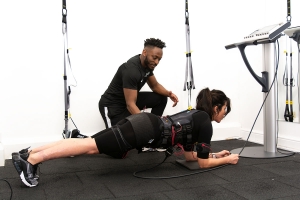In the fast-paced world of sports, every athlete pushes their limits to achieve greatness, whether it's sprinting down a track or executing a gravity-defying dunk. But amidst the adrenaline and glory lies an often-overlooked vulnerability: neck injuries. These silent saboteurs can sideline even the most dedicated competitors if not managed properly.
In this blog post, we’ll guide you through everything you need to know about neck injuries in sports, from effective prevention techniques to recognizing symptoms early on and implementing recovery strategies that get athletes back in action safely. Whether you're a seasoned pro or just starting your athletic journey, understanding how to protect your neck is crucial for long-term success. Let’s dive into the essential insights that will keep you playing hard while staying safe!
Common Types of Neck Injuries in Sports
Neck injuries in sports can range from minor strains to severe spinal cord injuries. Some of the most common types of neck injuries that athletes experience include:
Whiplash: This type of injury occurs when the neck is forcefully jerked back and forth, causing strain to the soft tissues in the neck. It is commonly seen in contact sports such as football and hockey.
Cervical Strain: Similar to whiplash, this injury is caused by overstretching or tearing of the muscles and tendons in the neck. It can happen from sudden impact or repetitive motions, such as in tennis or golf.
Cervical Fracture: This is a serious injury that occurs when one of the cervical vertebrae (bones in the neck) is broken or cracked. It can happen from a direct blow to the neck or from a fall, and it requires immediate medical attention.
Herniated Disc: In this injury, the cushioning discs between the vertebrae in the neck become damaged or displaced, causing pressure on the nerves and resulting in pain and discomfort. It can happen in sports that involve repetitive twisting or bending motions, such as gymnastics or wrestling.
Prevention Techniques for Neck Injuries in Sports
While some neck injuries in sports are unavoidable, there are steps athletes can take to reduce their risk of injury. Here are some effective prevention techniques:
Warm-up and Stretch: Before any physical activity, it’s crucial to warm up the muscles and stretch them properly. This helps increase blood flow to the muscles and prepares them for the demands of sports.
Use Proper Technique: Proper technique is essential in preventing neck injuries. Athletes should be trained on the correct form for their specific sport to reduce the risk of strain or injury.
Wear Protective Gear: In contact sports, wearing proper protective gear such as helmets and neck braces can help prevent serious injuries.
Strengthen Neck Muscles: Strong neck muscles can help support the head and reduce the risk of injury. Incorporating exercises that target the neck muscles, such as neck bridges and shrugs, into your training routine can be beneficial.
Listen to Your Body: If an athlete experiences any pain or discomfort in the neck, it’s essential to listen to their body and take a break. Continuing to play through pain can lead to more severe injuries.
Recognizing Symptoms of Neck Injuries
Early recognition of neck injury symptoms is crucial for proper treatment and recovery. Here are some common signs of neck injuries in sports:
- Pain or stiffness in the neck
- Limited range of motion in the neck
- Tingling or numbness in the arms or hands
- Headaches
- Muscle spasms in the neck
- Dizziness or lightheadedness
- Difficulty with balance or coordination
If an athlete experiences any of these symptoms, they should stop playing and seek medical attention. Or try neck tightening exercises to relieve the pain.
Conclusion
Injuries are a common part of sports, but taking preventive measures and recognizing symptoms can help reduce their occurrence and severity. It’s essential to always listen to your body and take necessary breaks to avoid serious neck injuries. With proper training, technique, and protective gear, athletes can continue to participate in their favorite sports safely.






